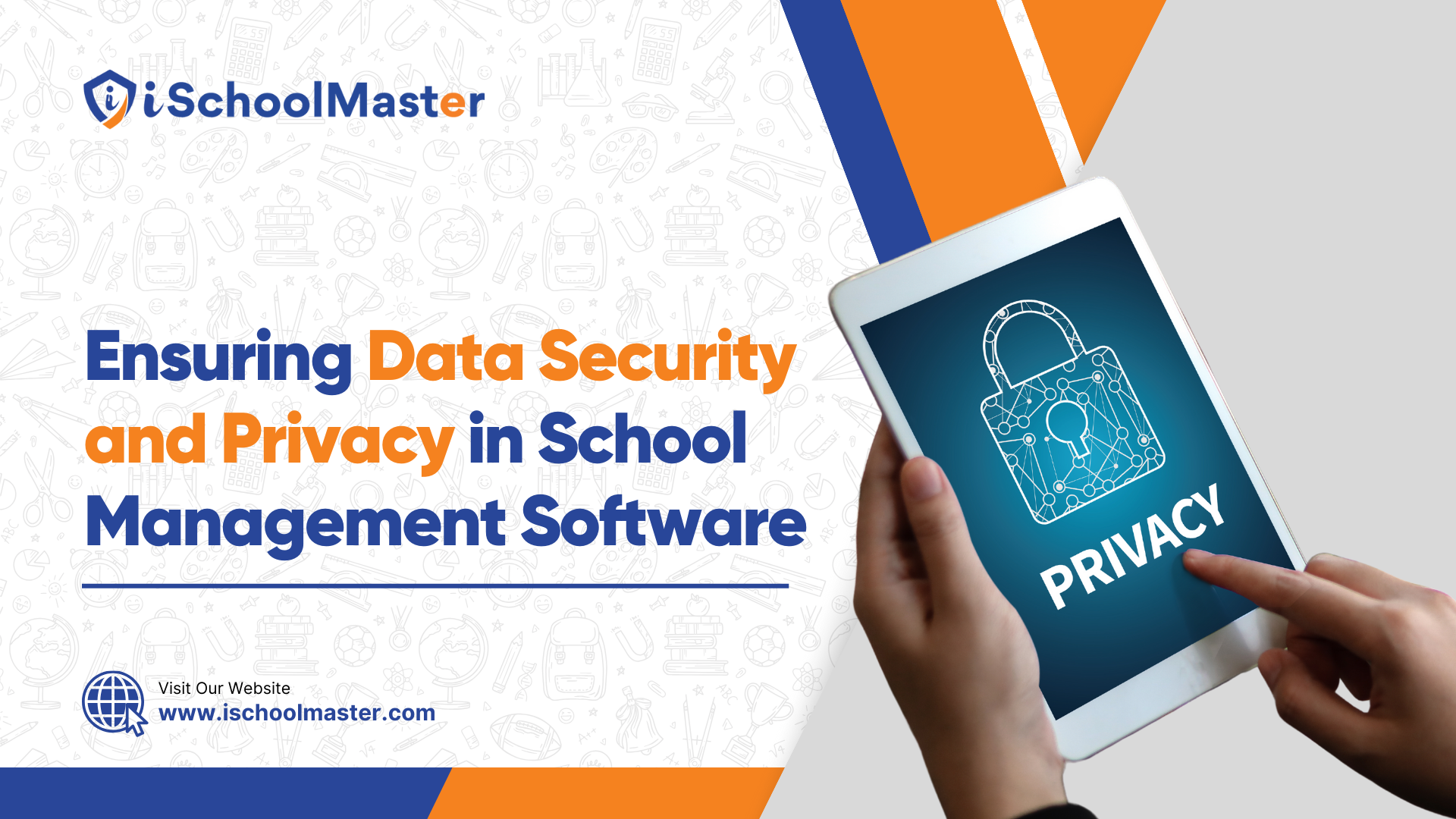Table of Contents
School management software has become indispensable to running an efficient academic institution with digital technology's rise. Not only can it streamline administration but it can also facilitate faculty communication and learning outcomes. Due to large amounts of sensitive data being transmitted via these platforms, comprehensive privacy and data protection measures must be in place; as discussed further below.
Understanding the Importance of Data Security and Privacy
School management systems contain sensitive data that must be kept secure, including personal information of students, faculty, parents, academic records, medical details, or financial transactions stored therein. All this must be protected to maintain student security.
Trust and Reputation Management: For schools to thrive, trust between students, parents, and staff members is vitally important. A data breach could damage an institution's reputation significantly and reduce enrollment numbers.
Identity Theft Protection: School management systems contain sensitive data that could attract cybercriminals looking to commit fraud or identity theft; making these systems an easy target. To protect students and school data against such activity, rigorous data security measures must be put in place.
Maintaining Educational Integrity: Unauthorized access can wreak havoc with an educational system's integrity and effectiveness, possibly leading to grade manipulation or other forms of fraudulent activities.
Educational Institutions seeking to protect their educational software data must create and implement a comprehensive privacy and security plan, outlining essential components as follows.
Implementation
Robust Access Controls at Launch
Access controls are an integral component of protecting sensitive information by restricting it only to authorized users. This can be accomplished in various ways such as:
Role-Based Access Control: By assigning permissions based on users' roles within an institution, data pertinent only to them can easily be accessed.
Multi-Factor Authentication (MFA): Multi-Factor Authentication (MFA) enhances login security by requiring multiple forms of verification - for instance, both password and SMS code sent directly to their phone - before login can occur.
Employ Data Encryption
Encryption can provide invaluable protection for data during transit and storage. By turning information into unintelligible text encryption offers protection even if intercepted without its decryption keys.
Transport Layer Security (TLS). TLS encryption protects data sent over the internet - for example when accessing school management software via web browsers - while Advanced Encryption Standard (AES) enables more secure protection of backups and databases.
Conduct Regular Security Audits and Vulnerability Assessments
Regular security audits, vulnerability assessments, and other security measures must be performed on school management software to identify vulnerabilities and address potential security flaws.
Penetration Testing: Regular penetration tests simulate cyberattacks to identify vulnerabilities in systems and assess resistance against potential threats. Security Audits: An exhaustive security audit helps pinpoint areas for improvement and areas requiring change.
Practice Data Minimization and Anonymization
Data minimization and anonymization can protect privacy by protecting against privacy breaches.
Data Minimization: By adopting policies that limit themselves to collecting only essential data and then immediately destroying it after collection, organizations can reduce the severity and impact of breaches by collecting only what's necessary and then quickly disposing of it.
Anonymization: By eliminating personally identifiable data from datasets used for research and analysis, anonymization lowers the risk of unauthorized disclosure of confidential information.
Prioritize Staff Training and Awareness
Unfortunately, data breaches often result from human error, making education on data security essential to safeguarding sensitive information and keeping our systems secure. Staff must receive proper training on data protection from day one.
Training Programs - Regular training sessions on topics such as recognizing phishing attacks, following secure password practices, and instituting data management procedures provide staff with the knowledge to reduce security risk.
Awareness Campaigns: By raising the importance of privacy and data security through posters, periodic reminders, or newsletters, awareness campaigns can create a culture in which these issues become part of daily conversation. This will only serve to reaffirm them over time.
Secure Software Development Practices
School management software must use secure coding techniques to prevent vulnerabilities during development.
Code Reviews: Code reviews and security tests during development help identify and address security vulnerabilities that might exist.
Secure Development Lifecycle: The Secure Development Lifecycle is a software development process that incorporates security issues at each stage, further increasing system protection. 8 Implement data backup and recovery mechanisms
In the event of hardware or security failure, having regular data backup and recovery plans is vital in protecting data integrity. Automated Backup Solutions: Automated backup solutions offer another method of protecting important information by automatically backing it up regularly and decreasing risk.
Disaster Recovery Plan: By developing and testing a disaster recovery plan, educational institutions can quickly restore data after any security breach and resume operations as fast as possible.
Conclusion of Article
An active and multifaceted approach must be taken to data privacy and security in school management software with a mobile app for schools. By employing strong access controls, encrypting sensitive data, conducting regular security audits, limiting data collection efforts, prioritizing staff training needs, developing incident response plans, adhering to secure software development practices, and maintaining backup data systems, educational institutions can safeguard sensitive data while building trust from their stakeholders.
Author - Rohan Nanda
Rohan Nanda is a seasoned content writer with 9 years experience in school management system, school software and erp solution content across multiple formats. He leverages his skills in crafting curated content on the school management system. In his personal time, He enjoys reading article and being up-to-date on trends in school erp technology.

